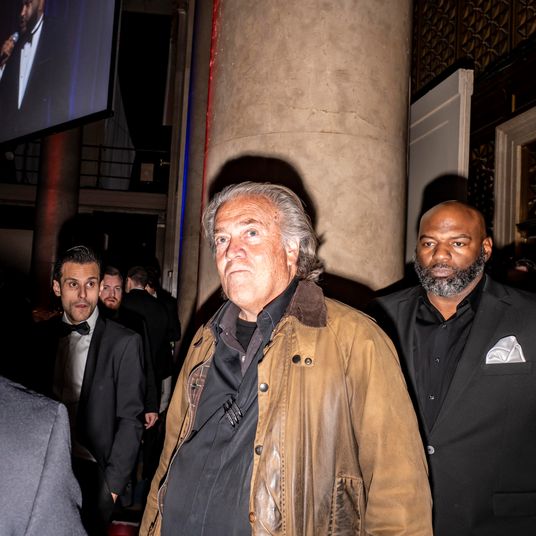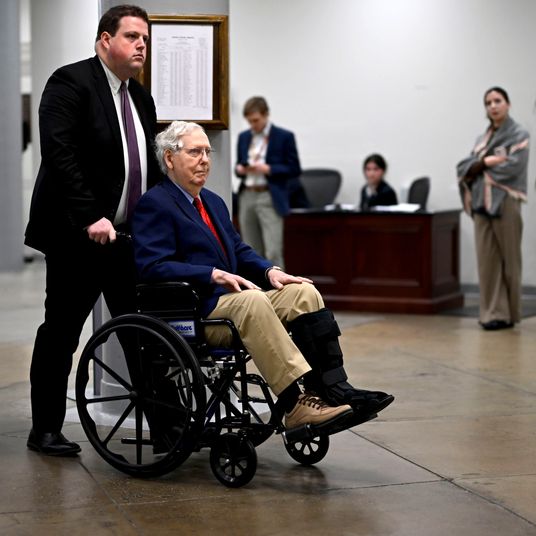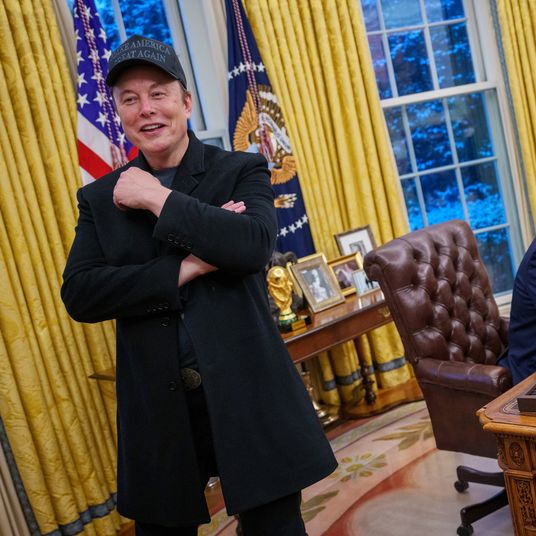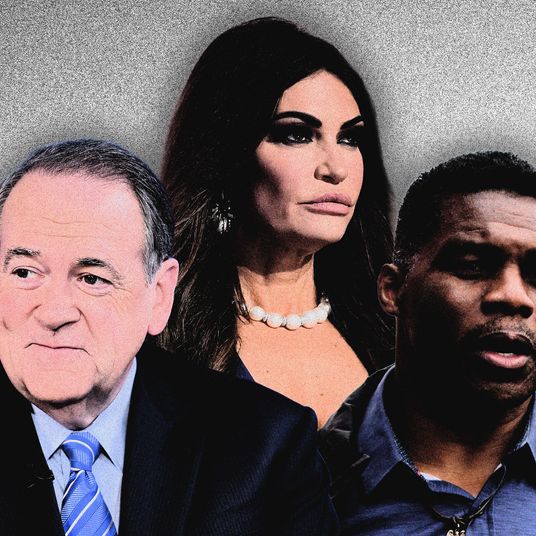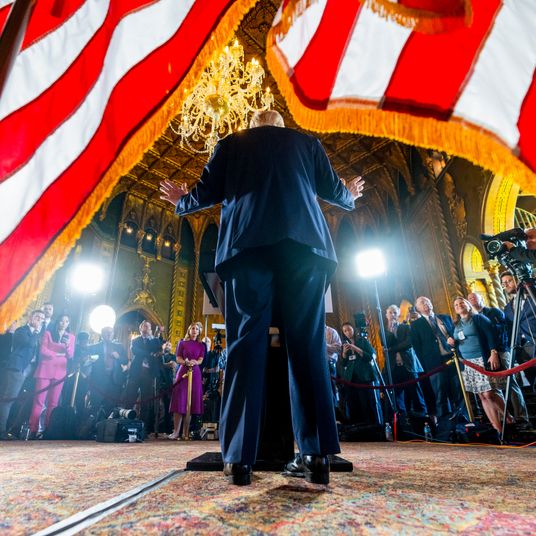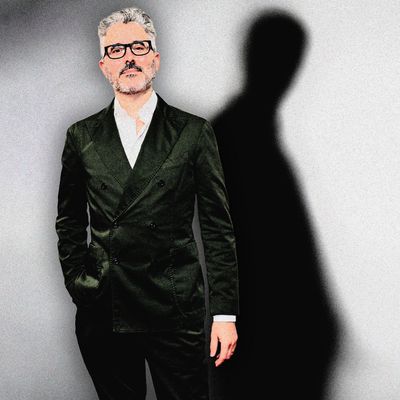
Since time immemorial, reporters at the New York Times have celebrated their first A1 byline with a copy of the plate used by the printing plant for that day’s edition of the paper. These days, however, they have been encouraged to strive for a different prize: a little Renzo Piano–red plexiglass plaque called the “Trifecta.” When the Trifecta was first introduced, it recognized reporting that lands on the Times’ three marquee platforms in the modern era: the homepage, The Morning newsletter, and audio, which is led by The Daily, the podcast downloaded by millions of people every morning.
Despite a proliferation of audio and video products at the Times, The Daily remains one of the paper’s most successful and best-known products, as well as one of the rare venues for journalists within the paper to differentiate themselves from their exquisitely credentialed colleagues. So it’s no surprise that, as The Daily looks for a new co-host to share duties with Michael Barbaro, there is a lot of interest within the company. But there are also a lot more reservations than you would expect, which is indicative of The Daily’s changing relationship to the Times.
The Times announced in December that Sabrina Tavernise, who had been co-hosting alongside Barbaro since early 2022, would step away from the show and return to reporting. Since then, the show has featured a rotating stable of guest co-hosts, while the show’s leadership and deputy managing editor, Sam Dolnick, who oversees the Times’ audio journalism, have been in talks with a number of people in the newsroom about taking the empty seat permanently.
Those in the mix include Mexico City bureau chief Natalie Kitroeff and reporter Rachel Abrams, both of whom have regularly hosted and these days seem to be publicly auditioning for the gig. The sense internally is that Dolnick & Co. want a woman. Rachel Dry, who edited Sunday Business before joining the audio department in June 2023 as editor of The Run-Up podcast, is also in contention and will be coming on to guest host in the near future. National reporter Kate Zernike is in the running as well. I’m told the show approached investigative reporter and friend of the pod Jodi Kantor to gauge her interest, but she’s inclined to keep reporting.
And while the Times has said that the search is focused internally, that hasn’t stopped hundreds of applicants from flocking to the online job posting. There’s been interest from a number of prominent people in the broadcast world, I hear. CNN’s Audie Cornish, a former co-host of NPR’s All Things Considered, has spoken with the Times about the role, according to two sources.
The Times is hoping to make a decision this spring. I hear they’re looking for someone with a slightly different set of interests than Barbaro. Tavernise, for example, has been a war correspondent and also covered demographic shifts in the U.S., interests that complemented Barbaro’s business- and political-reporting background.
The Daily launched in 2017, in the early days of the first Trump White House, as a dive into a single major news story that Barbaro would interview his Times colleagues about. The show created an audio experience of the Times front page that was both accessible — episodes are around 25 minutes long — and informative. Barbaro went from reporter to media celebrity — “The Voice of a Generation,” as this magazine proclaimed — and remains a VIP both inside and outside 620 Eighth Avenue, where his personal life has become tabloid fodder. “Whoever is there is going to be a second fiddle to him,” said one Times staffer, adding, “Don’t get me wrong, I would still take it if they offered it.”
The show went through a cycle of guest hosts in 2021 when Barbaro took paternity leave, including Tavernise, technology columnist Kevin Roose, and political correspondent Astead Herndon. While Tavernise won the bake-off, Roose and Herndon went on to become audio stars at the paper in their own right, hosting shows and offering inspiration to colleagues trying to game their next move at the Times, which under executive editor Joe Kahn has become a big bureaucratic machine with fewer opportunities for individuals to shine on the page. Herndon credits the experience with helping him grow in audio. “But if you’re just trying to be Michael for a week, it’s a lot of hours,” he added.
Tavernise was named official co-host after recording episodes for the show from Ukraine, where she’d gone to cover Russia’s invasion. She hoped, I’m told, that she would be able to bring more of this fieldwork to the show, but found that impossible. The Daily is so highly produced that it takes hours and hours to make a single episode, with producers and editors working until between 10 p.m. and midnight most nights, according to a source familiar with the process. And there’s always the possibility that the planned show will get scrapped at the eleventh hour if there’s breaking news. Tavernise raised issues with the workflow and urged the show to add a third host months before she ultimately decided to leave, I’m told.
The arduous production process is obvious even to guests on the show, who say they have to allot at least three hours for recording, though “everyone still drops everything when they call,” as one reporter put it, because of the show’s reach and unique narrative power. The show has 5.7 million weekly active listeners across Apple Podcasts, Spotify, and its partnership with APM, according to the Times, and is downloaded more than 50 million times a month. In 2017, it was downloaded 15 million times a month.
Still, The Daily’s place inside the Times is different today than it was in 2017, and not only because the podcast boom has come and gone. There are now more ways for journalists to command the spotlight as the paper leans into new media, like the up-close-and-personal reporter-led vertical video explainers that the Times has been pushing on the homepage. (Though one Times insider warned, “We do get a lot of reader complaints about the homepage videos.”) And, in keeping with a broader industry shift, the Times’ audio department is increasingly incorporating video — an expansion that has brought Ezra Klein one step closer to talk-show host. It’s harder to integrate video into The Daily — though they have experimented with it for the roundtables — given the show is more edited and less conversational than some of its counterparts.
All of which is to say that The Daily is no longer the only ticket to upping your visibility inside the paper. Managers will even give you a Trifecta if your story lands on other podcasts, newsletters, and on-camera projects. And being a host requires a trade-off. It means giving up the ability to pursue your own stories and instead interviewing others, in a very scripted way, about theirs. “You gain one voice and lose another,” as a Times staffer put it.
“This is not a hard-core reporting job. You’re essentially a radio host or news anchor,” said another. “I could see doing it for a while and being like, Okay, great, this got me famous or bumped up my paycheck, and now I can go do what I want to do.”
More From This Series
- Resistance Media Lives!
- Can a Brit Become the Face of Politico?
- The New Yorker’s Anxious 100th Birthday Celebration







